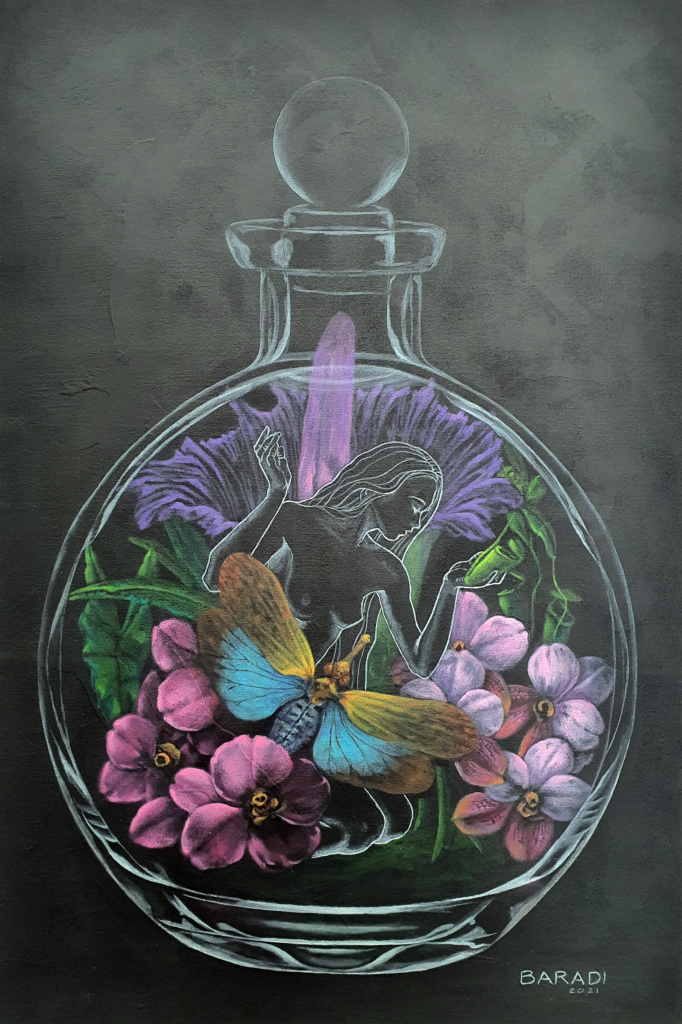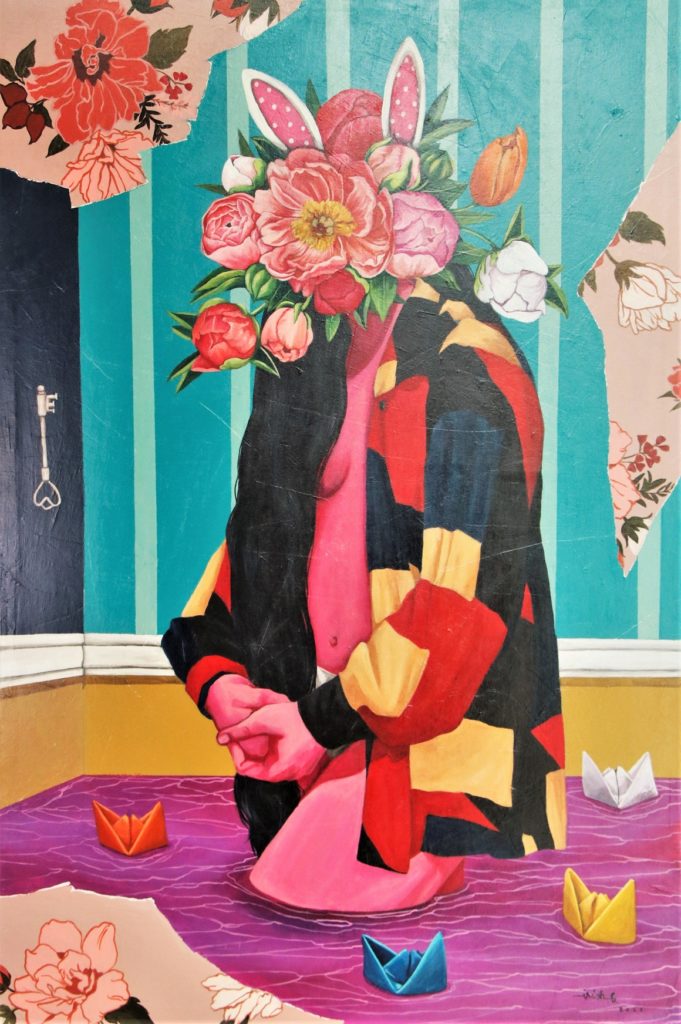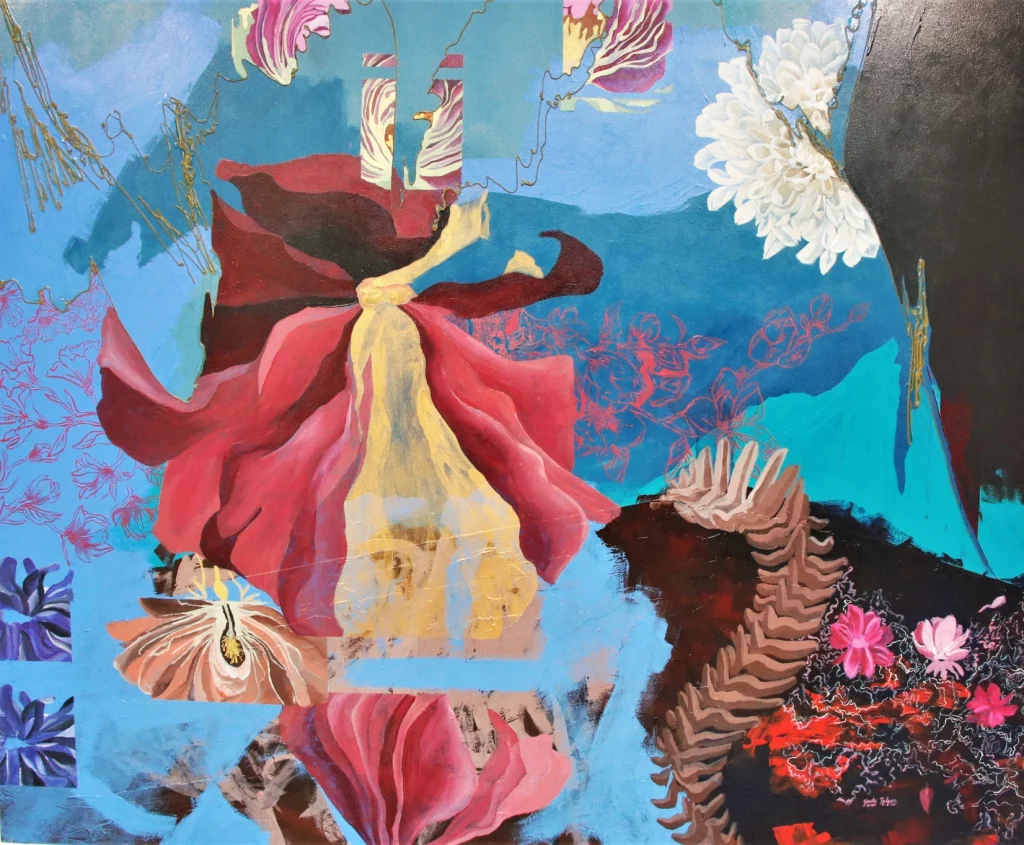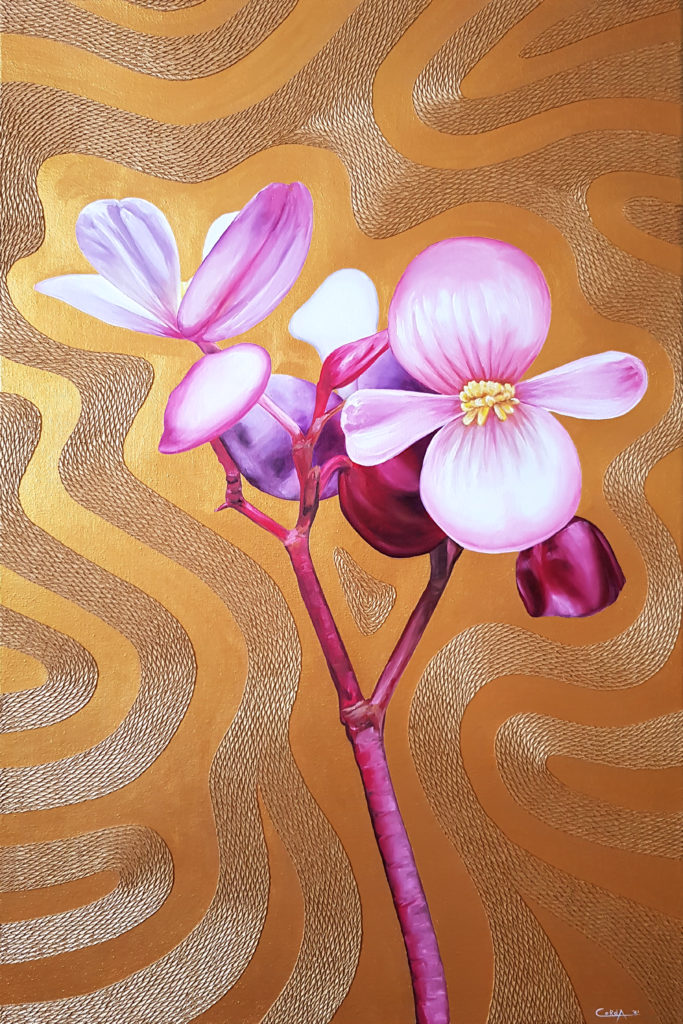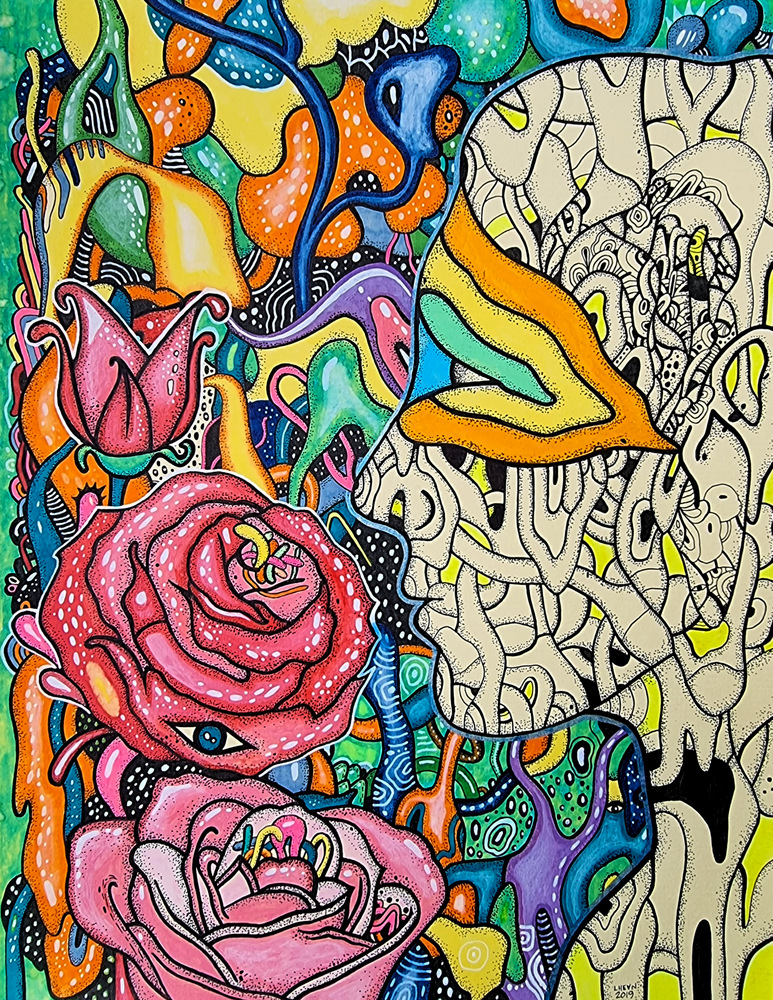Art Talks
The Power of Flowers
Flower painting in contemporary art has come a long way. Flowers have been a favorite subject for art and painting in various cultures since ancient times. The Greeks featured flowers and floral patterns in their sculptures, vases, and architecture. The Romans featured flower designs in their mosaic art. Indigenous cultures represented the flower in their distinct stylized fashion in their weaving and carvings. In China and Japan, scroll paintings of flowers have been part of their tradition for centuries influencing other cultures near them. In Western art, flowers which were used as something symbolic or decorative as part of religious art during the Gothic period evolved to be the still life paintings.
German painter Albrecht Durer loved painting wildflowers. During the baroque period in Spain, a style of painting emerged called “bodegones”. This word came to mean still life painting in Spanish art. Spanish painters featured fruit, vegetables, meat, and flowers on a black or a very dark background that creates contrast and a very dramatic, stark effect. On the other hand, baroque artists in France featured flowers in dreamy pastel shades. With the advancement in printing processes and color in printing during the eighteenth century, botanical publications were printed and the profession as a botanical illustrator earned recognition and respect. In the Philippines, Augustinian friar Fr. Manuel Blanco published the first book “Flora de Filipinas” on the flora of the colonized country in 1837 and 1845. A posthumous illustrated version was published in 1877. This edition was illustrated by Celestine Fernandez Villar together with Antonio Llanos and other artists.
During the late nineteenth century, Impressionist painters popularized the still life paintings of flowers. Vincent Van Gogh painted versions of the famous Sunflowers and Irises. Claude Monet painted his iconic Lilies. Renoir was popular for his bouquets of chrysanthemums and roses while Mary Cassatt for her lilacs on a window. In the Philippines, the master Fernando Amorsolo painted still life of flowers and featured women with flowers in his romantic, Impressionistic style. Other twentieth-century artists created modern innovations in the art of painting flowers. Georgia O’Keefe painted her series of flowers up close very much like a photographer’s extreme close-up shot popular in nature photography. In the 1960s and 1970s, Andy Warhol burst into the scene with his pop art. He created works using the silk screen printing process which featured pop icons like Marilyn Monroe and Elvis Presley, everyday objects like cans of Campbell’s soup, and his famous neon-colored series of flower prints. In the Philippines, modernists such as Mauro Malang and Vicente Manansala painted flowers in a deconstructed, abstract style.
In the post-modern digital world today, artists have a smorgasbord of visual styles from the long history of art which they can use as an inspiration to depict their works. Contemporary artists in the Philippines currently interpret flowers in very interesting and unique ways.
Flor Baradi in the detailed illustration, “Obsession” features a bottle containing a figure of a nude woman sitting on her legs surrounded by gorgeous, exotic purple, lavender, and pink flowers. There is a moth with blue and yellow ochre wings in the bottle. The woman seems enchanted and almost fairy-like. There is something surreal and magical in the image. The subject on a black background is reminiscent of the Spanish “bodegones” paintings.
The woman in “Obsession” seems happy in her own skin and content in the solitude of her bucolic world. The flowers and moth represent a love for nature and a responsibility to the environment. Unlike the traditional type of woman who needs others and can only be happy in relationships, this woman relishes her independence and solitary, serene life surrounded by the beauty of nature.
In “Confined“, Irish Galon creates a surreal painting of a long-haired woman wearing an unbuttoned blouse. Her pink figure is partially seen underneath the blouse and her figure is stuck in a room. Her thighs which seem to be walking are cut short by the floor. The purple rug seems to be a purple body of water with origami folded paper boats scattered around the woman. The woman has no face but instead has a bouquet of bright pink peonies and rabbit ears. There is a painted collage of baby pink wrapping paper with bright pink flowers and a key on the midnight blue wall.
In the work “Confined”, Galon represents women who feel confined by their situation or experience. The feeling of confinement for a woman can be caused by restrictions and by traditional expectations of society for women “to get married and to have children” which she is pressured to conform to but which prevent her from taking the less conventional direction that she would have wanted to take. Rabbits visible in the rabbit ears symbolize fertility in ancient lore. Flowers represent feminine sensibilities. There is a social cost for women should they defy the norms of the still sexist Filipino society. She needs the courage to select the boat that will take her to her personal happiness.
Jade Fulgar‘s deconstructed big reddish pink rose with scattered pink and lavender petals, blooms of pink and red mums, white hydrangea, and a reddish pink rose is entitled “Sorry”. These petals and flowers are arranged on a cool plane of aqua, teal, sky blue, and sea green. The images are striking and somewhat look inspired by the flower painting series of Georgia O’Keefe in its use of extreme close-up of flowers. The composition of the flowers on the blue plane has a surreal quality and yet visually the colors and floral forms look pretty and fresh. Although flowers especially red and pink roses have traditionally been used to quietly express love or interest in a person or to express an apology. The spliced rose with petals strewn on the plane hint at a need for forgiveness, to win over a loved one who has been hurt or angered.
Seth Corda‘s “Golden Bloom of Hope” is the image of a lilac orchid on a yellow-orange and beige background. The still life is made interesting by the fusion of a representational, detailed orchid painted on an abstract background. The presentation of a single orchid at the center of the space is reminiscent of the way flowers are depicted in botanical illustrations. Yellow and the sun are symbols of hope. The background with the yellow-orange squiggly lines are the rays of the sun giving sunshine so this orchid can bloom. It shares the wisdom in the adage: “Bloom where you’re planted.”
“King/ Queen” by Lhean Storm is an illustration of surrealistic images of a profile of an androgynous face which could be a man or a woman on the left side and roses on the right. Storm who is inspired by psytrance music has an intuitive approach and creates a chaotic mélange of neon-colored doodles and figures with optical illusion. The head of the profile has open lips. The human head has illustrations of body parts—the eyes, ears, and mouth. The designs on the psychedelic garden are playful doodles. The androgynous head is a symbol of balancing the Jungian animus and anima– the male and female qualities in each human being, of harmonizing the masculine yang and the feminine yin energies in a person.
The subject of flowers continues to fascinate contemporary artists in our fast-paced consumerist world. There is something sublime in the beauty and simplicity of flowers which is a contradiction to the culture of acquisition and shopping. Flowers and flowering plants are a rarity in our densely populated urban jungles. In the past idyllic times, people picked flowers from their garden or the surrounding fields near their homes. These days, many people live in condominiums or crowded city spaces with hardly any connection with nature. A painting of flowers in a room or a home may be the only means left to commune with nature. Perhaps, living with an art work of a flower or flowers is one of the concrete ways to stop and smell the flowers, to bring in the life force of the almost inaccessible and fast disappearing nature into one’s own heart and soul.
These diverse, contemporary interpretations of modern blooms can be viewed at Imahica Art located at Lee Gardens, Mandaluyong City, open daily from 10 AM to 6 PM. Walk-ins are welcome, or you may also contact the gallery to schedule a visit. We look forward to seeing you!
Written by Christine Carlos

